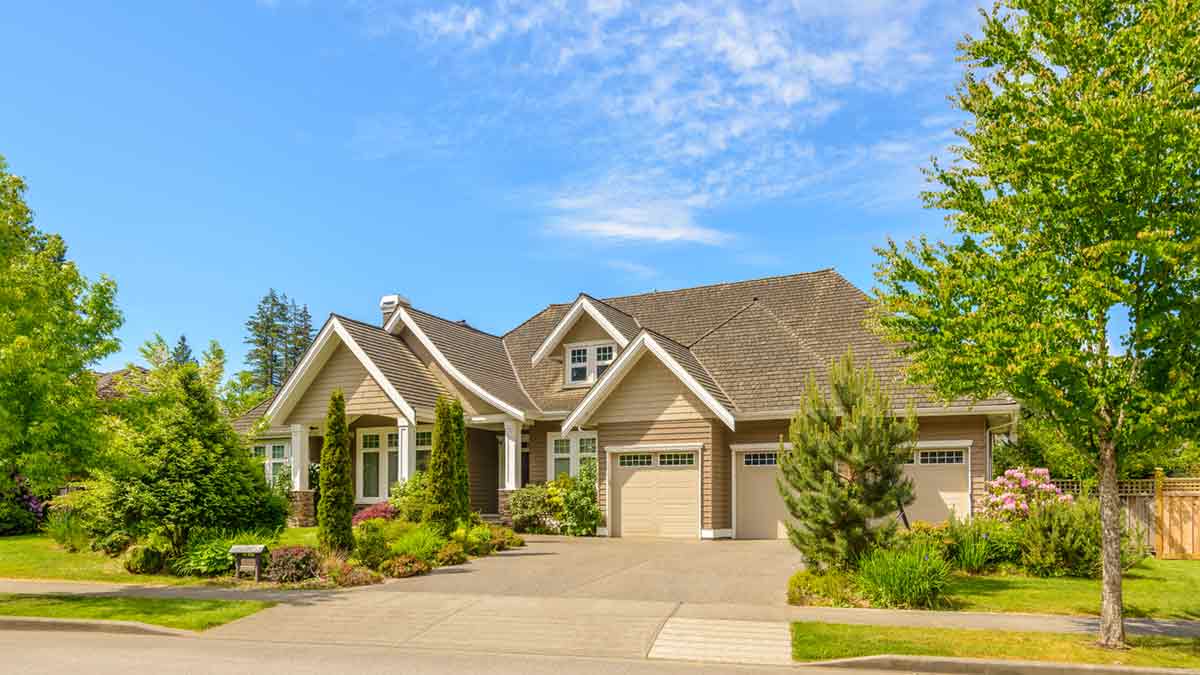Trees around your roof can be both good and bad at the same time.
Trees can be a beautiful addition to any property, providing shade, improving air quality, and enhancing curb appeal. However, their proximity to your home can significantly impact your roof’s condition and lifespan. Let’s explore the various ways trees affect your roof and what you can do to protect your investment.

Positive Impacts of Trees on Roofs
Natural Shade and Temperature Regulation
Trees near your home can provide natural shade, which offers several benefits:
- Reduce direct sunlight exposure on your roof
- Lower attic temperatures in summer
- Potentially decrease cooling costs
Wind Buffer
Large trees can act as a windbreak, offering some protection:
- Reduce wind pressure on your roof
- Minimize the risk of shingle uplift during storms
Negative Impacts of Trees on Roofs
Falling Branches and Debris
One of the most significant risks trees pose to roofs:
- Heavy branches can cause severe damage if they fall
- Smaller twigs and leaves can accumulate, leading to other issues
Moisture Retention
Trees can contribute to moisture-related problems:
- Overhanging branches prevent sunlight from drying the roof
- Trapped moisture can lead to moss, algae, and mold growth
Gutter Clogging
Leaves and small debris from trees often end up in gutters:
- Clogged gutters can cause water to back up under shingles
- Overflow can lead to foundation issues and basement flooding
Root Damage
While less common, tree roots can sometimes cause problems:
- May damage underground pipes, leading to moisture issues
- In extreme cases, can affect the home’s foundation, impacting the roof
Preventive Measures to Protect Your Roof
Regular Tree Maintenance
Proper tree care is crucial for roof protection:
- Trim branches that hang over or near the roof
- Remove dead or diseased limbs promptly
- Consider professional arborist services for large trees
Gutter Cleaning and Maintenance
Keep your gutters in good condition:
- Clean gutters at least twice a year, more if you have many trees
- Install gutter guards to reduce debris accumulation
Roof Inspections
Regular roof checks can catch problems early:
- Inspect your roof after storms or high winds
- Look for signs of damage or excessive debris accumulation
- Consider professional inspections annually
Strategic Landscaping
Plan your landscaping with your roof in mind:
- Plant trees at a safe distance from your home
- Choose species that are less likely to drop leaves or branches
- Consider the mature size of trees when planting
When to Consider Tree Removal
Sometimes, removing a tree is the best option:
- If the tree is diseased, dying, or structurally unsound
- When roots are causing significant property damage
- If the tree poses an ongoing threat to your roof or home
Balancing Nature and Home Protection
The Eco-Friendly Approach
While protecting your roof is important, consider the environmental benefits of trees:
- Trees provide habitat for wildlife
- They improve air quality and reduce carbon dioxide
- Mature trees can increase property value
Finding Middle Ground
Aim for a balance between roof protection and maintaining trees:
- Regular maintenance can often mitigate risks without removal
- Consult with both roofing professionals and arborists for the best approach
Nurturing Trees While Protecting Your Roof
Trees and roofs can coexist with proper management. By understanding the impacts trees have on your roof and taking proactive measures, you can enjoy the benefits of a green landscape while ensuring the longevity of your roof. Regular maintenance, thoughtful landscaping, and timely interventions are key to striking this balance.

